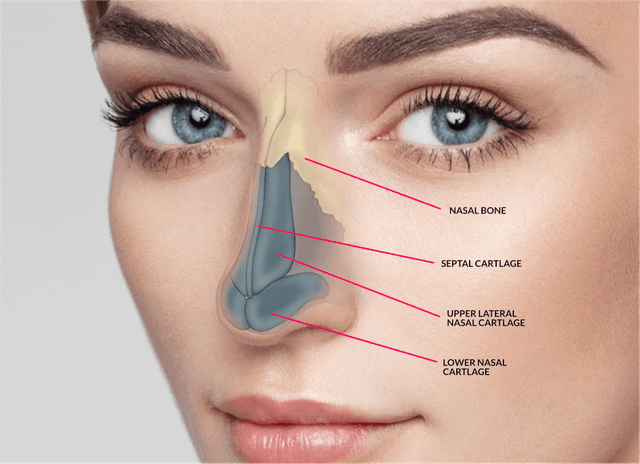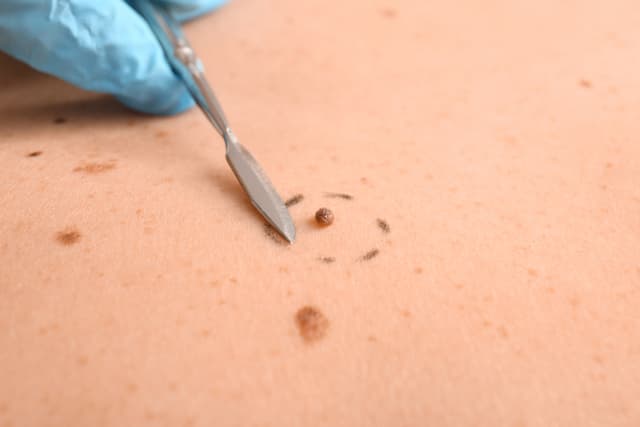Moles are common skin growths that can appear anywhere on the body. While most moles are harmless, you may opt for mole removal for cosmetic or medical reasons. If you're considering mole removal, you might be wondering, "What kind of doctor can remove a mole?" The answer is that a professional such as The Mole Doctor TM or The Beauty Mark Doctor TM is typically the best choice. These specialists are trained to remove moles safely and effectively, ensuring that the procedure is done with proper care. It’s crucial to see a medical professional for this procedure, as home remedies for mole removal can be risky and ineffective. In this guide, we’ll discuss who is qualified to remove a mole, the different techniques available, and why home remedies aren’t a good idea.
What is a Mole?
Skin moles are an extremely common and typically benign growth on the skin. They are made of pigmented cells called melanocytes, which produce the pigment melanin.
The number of moles you have is influenced by genetic factors and sun exposure. You can develop them at any age, and most adults have anywhere from 20 to 30 moles. You can reduce your risk of developing more moles by using sun protection, including sunscreen and protective clothing.
Does a Dermatologist Have to Remove a Mole?
No, there are actually several healthcare providers that are qualified to perform mole removal procedures. Who you choose to have removed the mole may depend on factors like the type of mole, its shape, location on the body, and the reason for removal. The most common healthcare providers for mole removal surgery include:
Dermatologists
Perhaps the most common choice to have a mole removed is your dermatologist. Since your dermatologist is familiar with your skin and health history—including cancer risks—they are the natural choice to remove moles. If you are considering mole removal, discuss it with your dermatologist during your annual skin exam.
Cosmetic or Plastic Surgeons
Plastic surgeons are a great choice for mole removal, especially if you’re having it removed for cosmetic reasons. Since plastic surgeons specialize in enhancing their patients’ appearance, they are highly skilled in removing moles with minimal scarring.
General Practitioners
Many general practitioners or family doctors can handle simple non cancerous mole removals right in their office. For more complex cases of atypical moles, you’ll likely be referred to a dermatologist or even cosmetic surgeon.
Can I Remove a Mole Myself?
No, at-home mole removal is not recommended. There are a variety of home remedies and products on the market that promise to remove moles, including lasers and creams. At best, these are ineffective. But on the whole, they are dangerous.
Doctors are trained to remove moles safely in sterile conditions. Removing it yourself opens you up to infection and more noticeable scarring than with professional removal.
Last but not least, if the mole is cancerous, it requires removal and testing by a medical professional. If a mole is cancerous and the entire thing isn’t removed, the cancer will continue to spread. With cancers like melanoma, this could be life threatening.
How are Moles Removed?
There are a few different mole and beauty mark removal techniques. Your doctor will determine the best method for removing your mole or beauty mark based on the type of mole or beauty mark you have and the risk of cancer. No matter which method is used, mole and beauty mark removal is a low-risk procedure.
Shave Removal
Shaving is one of the simplest methods of mole removal. With this technique, your doctor will administer local anesthesia and shave the mole from the surface of the skin using a small scalpel or razor blade. Since the shave removal procedure does not go below the skin’s surface, it is reserved for benign moles removed for cosmetic reasons or less dangerous skin cancers like basal cell carcinoma. If cancer is suspected, a shave biopsy will be performed. This method rarely results in very noticeable scarring.
Excision
Mole excision involves cutting the mole from the skin, going as deep into the skin and as far into the surrounding skin as necessary to ensure that the entire mole is removed. During this procedure, your doctor will inject a local anesthetic, then cut the mole from the skin. You may need stitches to close the wound. This is an outpatient procedure that typically takes less than an hour to complete.
Freezing
Another method to remove non cancerous moles on the skin’s surface is freezing. Your doctor will spray or otherwise apply liquid nitrogen to freeze it off. While this method doesn’t leave a scar, you may have a small blister where the mole was.
How to Know if a Mole Needs to be Removed
Most moles are benign and do not need to be removed. But if they make you self conscious or you’re at a high risk of skin cancer, you may consider removal. Dermatologists use the ABCDE rule to help patients recognize an abnormal mole and remember the signs of melanoma:
- A – Asymmetry. Benign moles are symmetrical, so asymmetry is often a cause for concern.
- B – Border. Take note if the edges of a mole or spot are notched, ragged, or blurred.
- C -Color. The color of the spot varies and includes different shades of brown or black. Patches of pink, red, white, or blue are also suspicious.
- D – Diameter. Melanomas are usually larger than ¼ inch—6 millimeters—across, although they can sometimes be smaller.
- E – Evolving. See a dermatologist if you notice the mole is changing in size, shape, or color.
Note that a mole does not need to have all of these symptoms to be cancerous. One or more of these signs is a good reason to schedule an appointment at your family doctor or dermatologist. After removal, your doctor will perform a biopsy to ensure all cancerous cells were removed.
Trust Your Mole Removal to Dr. Ardesh
The decision to remove a mole is a personal one, but it can have lasting positive effects on your self esteem and overall health. Turning to a qualified healthcare provider like Dr. Ardesh ensures safe and effective treatment results. To schedule your mole removal consultation, call our Beverly Hills office at (424) 242-8608 or request an appointment online.



